Related Research Articles

Thebes, known to the ancient Egyptians as Waset, was an ancient Egyptian city located along the Nile about 800 kilometers (500 mi) south of the Mediterranean. Its ruins lie within the modern Egyptian city of Luxor. Thebes was the main city of the fourth Upper Egyptian nome and was the capital of Egypt for long periods during the Middle Kingdom and New Kingdom eras. It was close to Nubia and the Eastern Desert, with its valuable mineral resources and trade routes. It was a cult center and the most venerated city during many periods of ancient Egyptian history. The site of Thebes includes areas on both the eastern bank of the Nile, where the temples of Karnak and Luxor stand and where the city was situated; and the western bank, where a necropolis of large private and royal cemeteries and funerary complexes can be found. In 1979, the ruins of ancient Thebes were classified by UNESCO as a World Heritage Site.
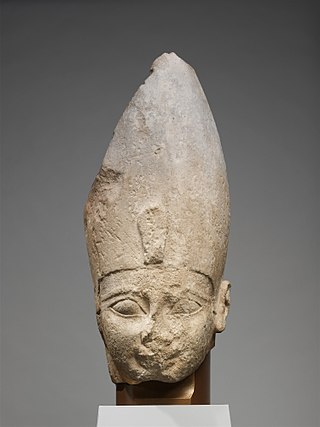
Ahmose I was a pharaoh and founder of the Eighteenth Dynasty of Egypt, classified as the first dynasty of the New Kingdom of Egypt, the era in which ancient Egypt achieved the peak of its power. He was a member of the Theban royal house, the son of pharaoh Seqenenre Tao and brother of the last pharaoh of the Seventeenth dynasty, Kamose. During the reign of his father or grandfather, Thebes rebelled against the Hyksos, the rulers of Lower Egypt. When he was seven years old, his father was killed, and he was about ten when his brother died of unknown causes after reigning only three years. Ahmose I assumed the throne after the death of his brother, and upon coronation became known as Nebpehtyre, nb-pḥtj-rꜥ "The Lord of Strength is Ra".

Amenhotep III, also known as Amenhotep the Magnificent or Amenhotep the Great and Hellenized as Amenophis III, was the ninth pharaoh of the Eighteenth Dynasty. According to different authors, he ruled Egypt from June 1386 to 1349 BC, or from June 1388 BC to December 1351 BC/1350 BC, after his father Thutmose IV died. Amenhotep was Thutmose's son by a minor wife, Mutemwiya.
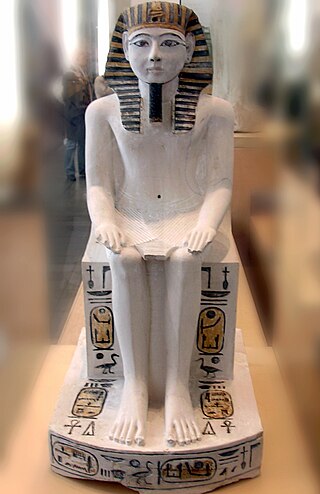
Amenhotep I or Amenophis I, was the second Pharaoh of the 18th Dynasty of Egypt. His reign is generally dated from 1526 to 1506 BC.

The necropolis of Draʻ Abu el-Naga' is located on the West Bank of the Nile at Thebes, Egypt, just by the entrance of the dry bay that leads up to Deir el-Bahari and north of the necropolis of el-Assasif. The necropolis is located near the Valley of the Kings.
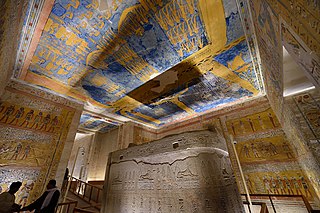
Tomb KV2, found in the Valley of the Kings, is the tomb of Ramesses IV, and is located low in the main valley, between KV7 and KV1. It has been open since antiquity and contains a large amount of graffiti.

Tomb ANB is a sepulchre located in the west of the necropolis of Dra' Abu el-Naga', near Thebes, Egypt. It may well have been intended as the burial place of the 18th Dynasty Pharaoh Amenhotep I and his mother Ahmose-Nefertari.

The Valley of the Kings, also known as the Valley of the Gates of the Kings, is an area in Egypt where, for a period of nearly 500 years from the Eighteenth Dynasty to the Twentieth Dynasty, rock-cut tombs were excavated for pharaohs and powerful nobles under the New Kingdom of ancient Egypt.

Southern Tomb 11 is an ancient sepulchre located at Amarna, Egypt. It was used for the burial of Ramose (General), whose titles included, "Royal scribe, Commander of troops of the Lord of the Two Lands, Steward of Nebmaatra ".

Tomb TT192, located in the necropolis of El-Assasif in Thebes, Egypt, is the tomb of Kheruef, also called Senaa, who was Steward to the Great Royal Wife Tiye, during the reign of Amenhotep III. It is located in El-Assasif, part of the Theban Necropolis.

The Theban Tomb TT89 is located in Sheikh Abd el-Qurna, part of the Theban Necropolis, on the west bank of the Nile, opposite to Luxor. It is the burial place of the ancient Egyptian Amenmose, who was Steward in the Southern City during the reign of Amenhotep III, in the 18th Dynasty.
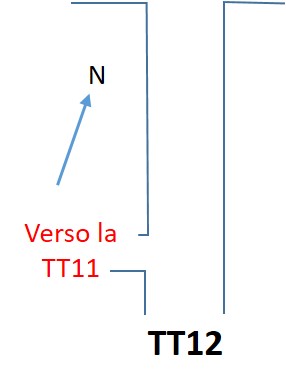
The Theban tomb TT12 is located in Dra' Abu el-Naga', part of the Theban Necropolis, on the west bank of the Nile, opposite to Luxor. It is the burial place of the ancient Egyptian Hery, who was Overseer of the Granary of the King's Mother Ahhotep, during the reigns of Seqenenre Tao II to Amenhotep I.
The majority of the 65 numbered tombs in the Valley of the Kings can be considered minor tombs, either because at present they have yielded little information or because the results of their investigation was only poorly recorded by their explorers, while some have received very little attention or were only cursorily noted. Most of these tombs are small, often only consisting of a single burial chamber accessed by means of a shaft or a staircase with a corridor or a series of corridors leading to the chamber, but some are larger, multiple chambered tombs. These minor tombs served various purposes, some were intended for burials of lesser royalty or for private burials, some contained animal burials and others apparently never received a primary burial. In many cases these tombs also served secondary functions and later intrusive material has been found related to these secondary activities. While some of these tombs have been open since antiquity, the majority were discovered in the 19th and early 20th centuries during the height of exploration in the valley.

Simut or Samut was an ancient Egyptian priest who held the position of Second Prophet of Amun towards the end of the reign of Pharaoh Amenhotep III. He is known from a number of objects, including his, Theban tomb chapel Tomb A.24.
Amenhotep-Huy was a Vizier of Ancient Egypt during the reign of Amenhotep III. Besides being Amenhotep III's Vizier, Amenhotep-Huy was also director of Upper and Lower Egypt and overseer of all the works of the King in Upper and Lower Egypt.
The Theban Tomb TT47 is located in El-Khokha, part of the Theban Necropolis, on the west bank of the Nile, opposite to Luxor.
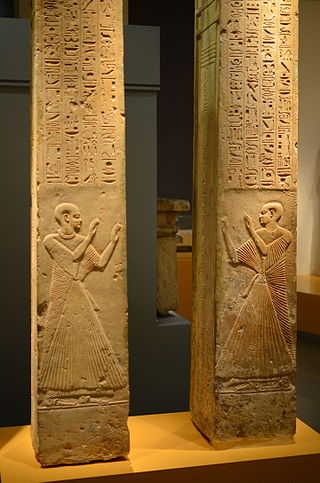
The Tomb of Ptahmes is a sepulchre in the necropolis of Saqqara, Egypt. Located on the side of the Pyramid of Unas, it was built in the 13th century BC during the 19th Dynasty of the New Kingdom of Egypt. The tomb belonged to Ptahmes, a high ranking official under pharaoh Seti I and his successor Ramesses II.
North Asasif – is a part of the Theban Necropolis located on the bottom and sides of the valley, along the processional ways leading to the royal temples in Deir el-Bahari: temples of Mentuhotep II, Hatshepsut, and Thutmose III. It encompasses private tombs dating from the Middle Kingdom to the Ptolemaic period. Evidence has been found of strong ties between Asasif and Deir el-Bahari through the ages.
Aten, properly called The Dazzling Aten though dubbed initially by archaeologists the Rise of Aten, is the remains of an ancient Egyptian city on the west bank of the Nile in the Theban Necropolis near Luxor. Named after Egyptian sun god Aten, the city appears to have remained relatively intact for over three millennia. Since excavation began in late 2020, it is emerging as the largest city of its kind in ancient Egypt, with a remarkable degree of preservation, leading to comparisons with Pompeii.
References
- ↑ Porter and Moss. Topographical Bibliography I part 1 (2nd ed).
- ↑ "Ancient tomb rediscovered under sands of Egypt". Archived from the original on March 8, 2009. Retrieved 2009-03-02.
- ↑ "Archaeologists rediscover lost Egyptian tomb" . Retrieved 2009-03-02.[ dead link ]
- ↑ "Tomb of Senneferi" . Retrieved 2007-06-06.